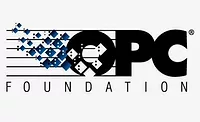TECH FLASH
OPC announces “OPC UA open shared source” strategy
The foundation opens the doors to facilitate increased adoption of OPC Unified Architecture technology beyond industrial automation.
“Adoption of OPC standards in industrial automation, and specifically reaching out to other domains, requires new ways of thinking to evangelize and increase awareness of the OPC technology,” says Stefan Hoppe, OPC Foundation vice president. “OPC Unified Architecture is becoming the dominant infrastructure and information modeling architecture for the Internet of things and Industry 4.0. These initiatives require complete transparency and openness about the technology to be a core part of their infrastructure.”
The foundation says its board of directors is highly supportive of the new strategy.
According to the foundation, OPC UA includes a connection and communication infrastructure for moving data/information and provides a service-oriented architecture (SOA) for multivendor, multiplatform, secure, reliable interoperability. In addition, OPC UA provides a complete solution for information modeling, allowing consortia and vendors to plug their simple or complex information models directly into OPC UA and use all the OPC UA SOA, allowing generic devices and applications to seamlessly share information.
The open shared source will be hosted on an open source collaboration community workspace. The majority of the technology will be under MIT license, with the OPC UA stacks under GPL license to maintain the consistency and quality of OPC Foundation deliverables. The OPC UA stacks available to foundation members will be under RCL license, allowing them to build the highest-quality OPC UA-enabled products and to certify the products through the comprehensive OPC Foundation certification and interoperability programs.
“The OPC Foundation vision of collaboration, working with other consortia to develop OPC UA companion specifications for their information models, requires a strategy of opening the doors to the OPC Foundation and providing the specifications and technology with a license that increases awareness and evangelism,” says Thomas Burke, OPC Foundation president and executive director.
Looking for a reprint of this article?
From high-res PDFs to custom plaques, order your copy today!






